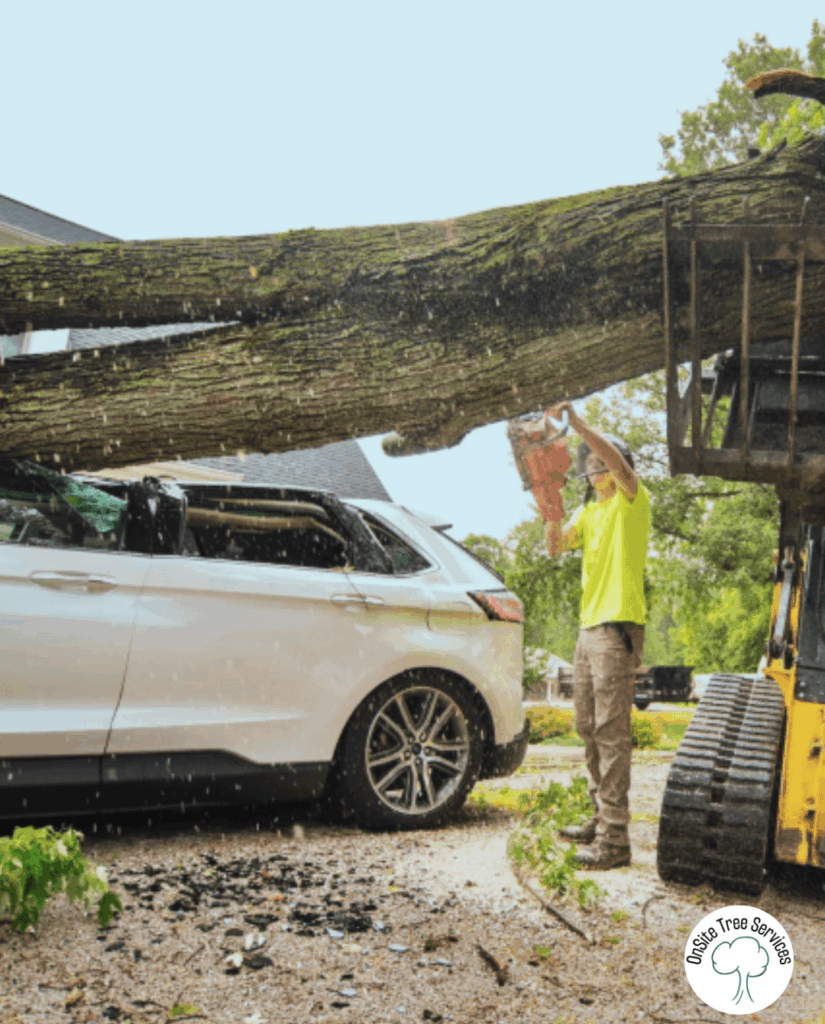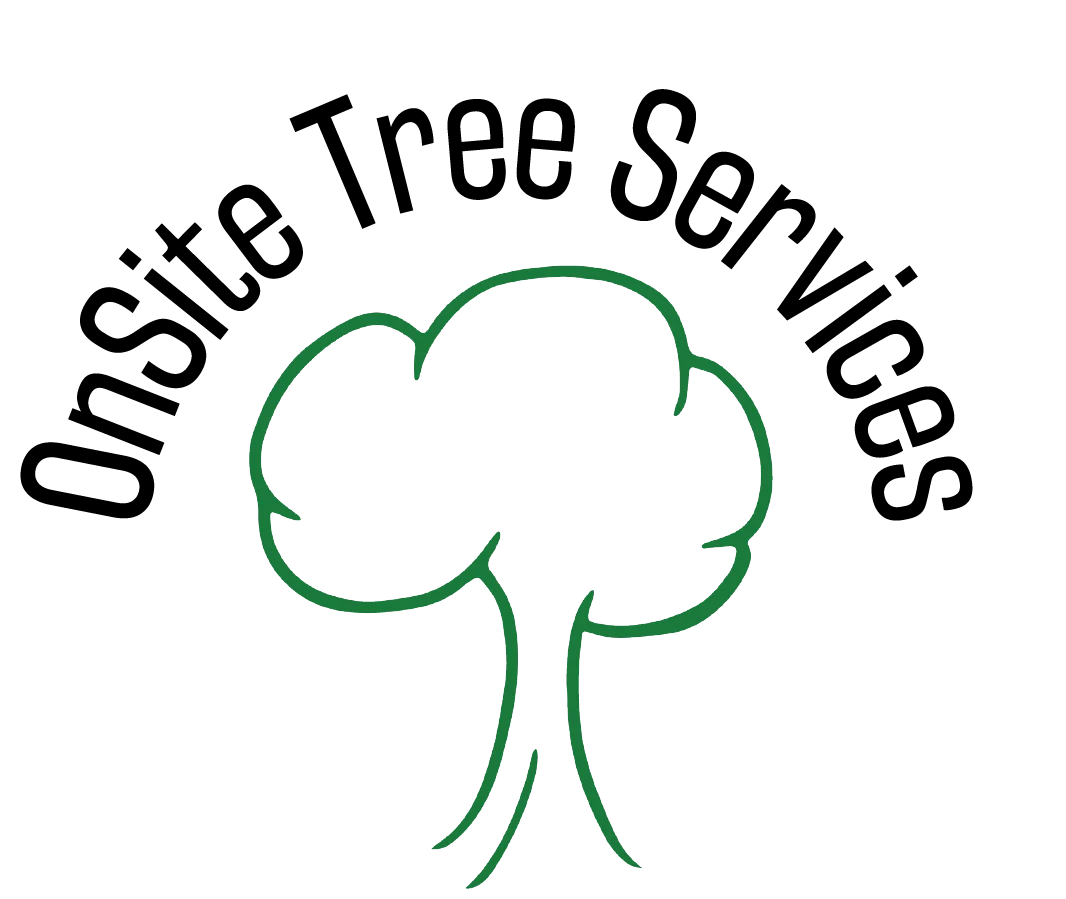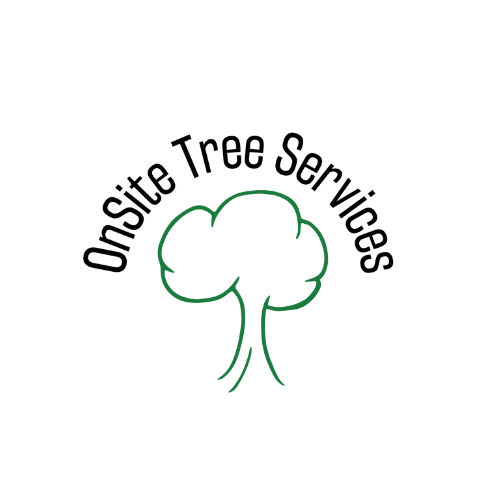Leaning trees can look harmless, but they may be a silent threat to your property. While some trees naturally grow with a lean, others show visible signs of root damage, peeling bark, or dead branches that signal danger. Knowing the difference helps prevent significant risks such as falling branches, power line damage, and expensive repairs.

Why Do Trees Lean and When Is It a Big Deal?
Trees may lean slightly as they grow toward sunlight or adjust to wind pressure. That’s normal and not always a big deal. However, when a tree suddenly leans, the tilt often indicates underlying issues, such as a failing root system or weakened tree structure.
- Normal lean: Steady growth over the years with no exposed roots.
- Dangerous lean: Recent tilt, soil cracks, or trunk splitting.
Healthy trees usually remain upright through each growing season, but a dead tree or one with root damage can tilt quickly. Leaning trees near a building or driveway should always be a concern, as falling branches may cause property damage.
Taking action early helps keep trees healthy and can prevent potential hazards. If you’re unsure whether your tree is safe or poses a risk of significant damage during storms, consulting a certified arborist early allows you to determine whether trimming, bracing, or removal is the best course of action. It can save both the tree and your property from future risks.
Common Causes of Leaning Trees
Not all leaning trees are the same. Some lean naturally, while others lean because of structural integrity issues. The most common causes include:
- Root damage or root rot – fungal growth weakens roots.
- Soil erosion – rain or flooding makes the ground unstable.
- Storms and high winds – multiple trees may tilt after strong winds.
- Pest infestation – insects hollow out trunks and cause weakness.
- Improper pruning – unbalanced canopies put strain on the trunk.
If you notice any of these problems, schedule a tree risk assessment before the tree becomes a hazard.
Visible Warning Signs That a Leaning Tree is Dangerous
A tree showing nutrient deficiency may lose leaves early, while other fungi can spread across the bark and weaken wood. If left untreated, these problems can destroy a tree’s vital part, its root system, making it unsafe for nearby homes. Healthy trees have strong bark, balanced canopies, and solid roots. Unhealthy or unsafe leaning trees show warning signs such as:
- Peeling bark or missing bark patches.
- Dead branches in the canopy.
- Fungal growth near the trunk or ground.
- Root damage or lifted roots.
- Insect infestation inside wood.
Healthy Trees vs. Trees at Risk
| Healthy Trees | Trees at Risk |
| Even growth | Sudden leaning |
| Full canopy | Dead branches |
| Intact bark | Peeling bark |
| Firm roots | Roots lifting from the soil |
Any tree that leans and shows multiple warning signs is a concern. Early inspection and trimming can reduce the risks before removal becomes the only option.
If you’ve noticed these issues, trimming may help. Our tree trimming services remove dead branches and keep trees balanced.
Potential Hazards of Ignoring a Leaning Tree
A leaning tree poses significant risks if ignored. The dangers include:
- Falling trees damaging homes, garages, and gardens.
- Branches hitting power lines, leading to outages.
- Injury risks for people walking near the tree.
- Expensive repairs after a storm.
Certified Arborist Insight: How to Assess Tree Health
A certified arborist knows how to spot problems beyond the surface. They check the root system, soil stability, canopy weight, pest infestation, and fungal growth.
Learn more about our expert team on the About Us page.
Safe Tree Removal and Risk Prevention
If your leaning tree poses significant risks, removal may be required. Common solutions include:
- Pruning to balance canopy weight.
- Cabling or bracing to stabilize young trees.
- Full removal if structural integrity is lost.
- Stump grinding to clear the ground for safety.
Our commercial tree removal service also helps businesses maintain safe landscapes.
Ask about stump grinding after removal to keep your property hazard-free.
Community Risks of Dead Trees and Tree Care Needs in Indiana
Indiana homeowners face unique challenges when it comes to leaning trees. Local conditions such as soil type, storm frequency, and neighborhood layouts play a big role in whether a leaning tree becomes a silent threat.
Soil Conditions
In many parts of Indiana, the clay-heavy soil holds water for long periods. This can cause root rot, weakening the root system and leading to a sudden lean. Other areas with sandy soil may not provide enough grip, making tall trees unstable after heavy rain. Our tree risk assessment can help determine if soil issues are a concern.
Storms and High Winds
Indiana storms bring strong winds that often tilt trees or cause broken branches. OnSite Tree Services serves multiple Indiana communities with professional tree care, trimming, and removal. Communities like Blackhawk, Fort Wayne, and Kendallville frequently call for emergency tree removal after severe weather. Leaning trees near power lines pose significant risks during these storms.
Urban neighborhoods often have trees close to buildings, gardens, and driveways. In Rome City and Columbia City, we see leaning trees becoming a big deal because of limited space. A falling branch doesn’t just damage one property; it can affect multiple trees and neighboring yards.
For inspections or removals, reach out on our Contact Page today.
Frequently Asked Questions (FAQs)
Do all leaning trees need removal?
Not all leaning trees are dangerous. Some trees naturally grow with a lean, but if you notice peeling bark, dead branches, or root damage, a certified arborist should inspect for potential hazards.
What happens if I ignore a leaning tree?
Ignoring a leaning tree can lead to significant damage during high winds, including property destruction and expensive repairs.
Can a leaning tree be saved without removal?
Yes. Options such as tree trimming, cabling, or bracing can stabilize certain trees, protecting both the tree’s health and your property.
Who should I call if I notice warning signs?
Contact a certified arborist from OnSite Tree Services. We provide tree removal, stump grinding, and trimming to keep properties safe.
Can pests or disease make a leaning tree more dangerous?
Yes. Pest infestation and fungal growth weaken wood and roots, making trees more likely to fall. Regular inspections help prevent underlying issues from spreading.
What areas in Indiana do you service for leaning tree issues?
We provide professional tree services across northeast Indiana, including Blackhawk, Fort Wayne, Kendallville, Rome City, and Columbia City.


